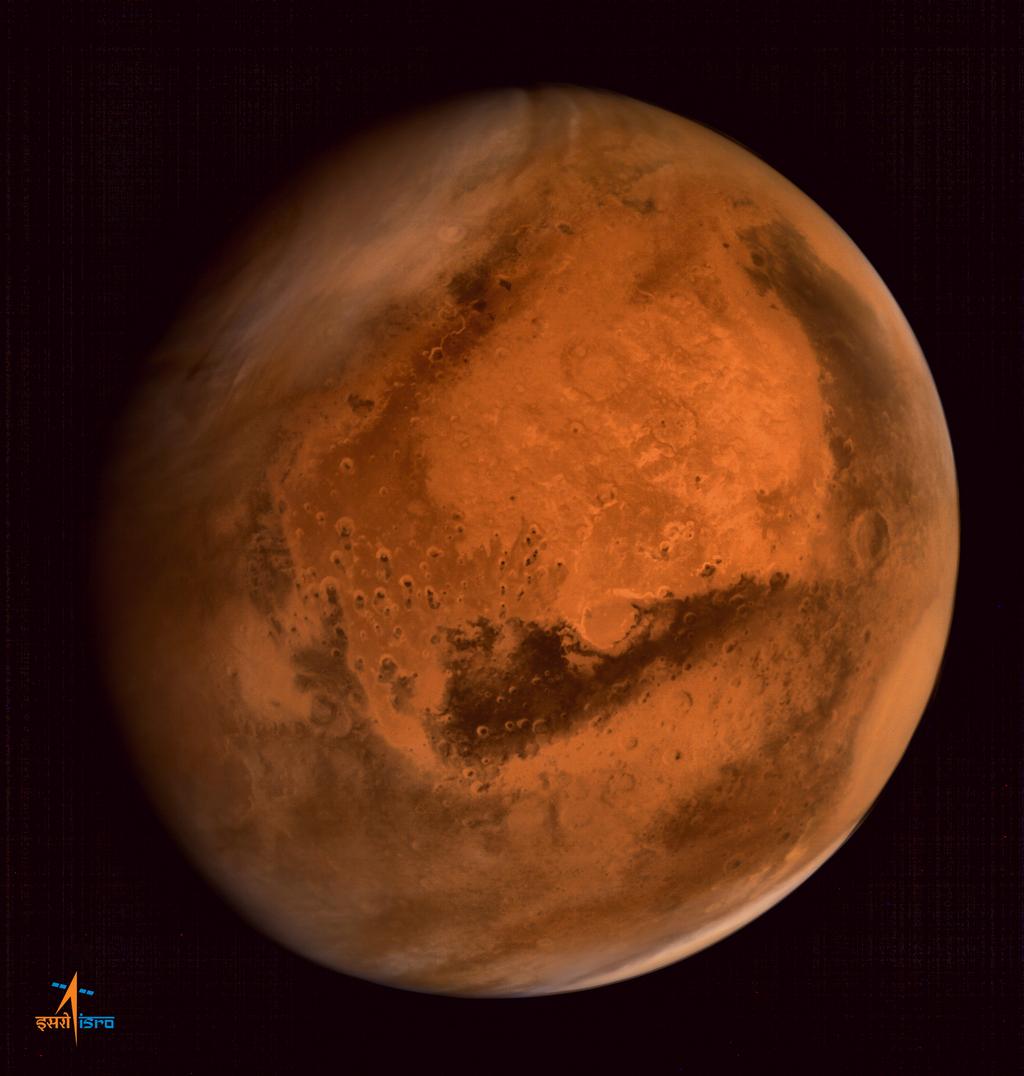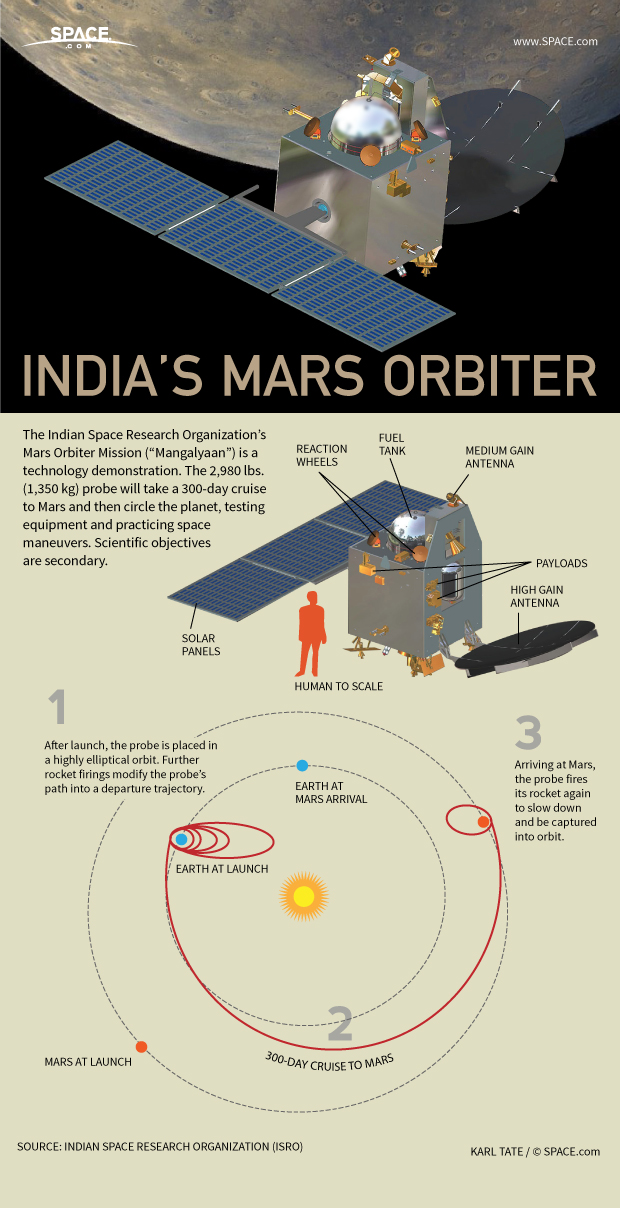
India's first-ever Mars probe is now one year into its historic mission, and it's still going strong.
The Mars Orbiter Mission (MOM) spacecraft, also known as Mangalyaan, arrived at the Red Planet on the night of Sept. 23, 2014 (Sept. 24 GMT and Indian Standard Time), just two days after NASA's Mars Atmosphere and Volatile Evolution probe (MAVEN) reached Mars orbit.
Mangalyaan, which means "Mars craft" in Sanskrit, was the first interplanetary probe ever launched by India, and its $73 million mission is primarily a technology demonstration, officials with the Indian Space Research Organisation (ISRO) have said. [See the amazing Mars photos by India's Mangalyaan probe]
But Mangalyaan carries a color camera and four scientific instruments, which it has been using to study the Martian surface and atmosphere over the past 12 months.
To celebrate the anniversary, ISRO has compiled some of MOM's best images and most interesting scientific results in a 120-page "Mars Atlas," which you can download free of charge here:
http://www.isro.gov.in/pslv-c25-mars-orbiter-mission/celebrating-one-year-of-mars-orbiter-mission-orbit-release-of-mars

MOM's mission was originally scheduled to last 6 months, but operations were extended by an additional 6 months earlier this year. Further extensions are likely; ISRO officials have said that Mangalyaan has enough fuel onboard to keep studying Mars for years to come.
MOM might even last long enough to welcome a sister craft to Mars orbit. ISRO officials announced last year that the country plans to launch a Mangalyaan 2 mission in the 2018-2020 time frame.
Get the Space.com Newsletter
Breaking space news, the latest updates on rocket launches, skywatching events and more!
MOM and MAVEN, which seeks to determine how fast Mars' atmosphere is being lost to space, are not the only operational spacecraft orbiting the Red Planet. NASA's Mars Odyssey and Mars Reconnaissance Orbiter are also eyeing the planet from above, as is the European Space Agency's Mars Express probe. (These latter three spacecraft arrived at Mars in 2001, 2006 and 2003, respectively.)
Two NASA rovers are also actively exploring the Martian surface — Opportunity, which landed in January 2004, and Curiosity, which survived a dramatic and unprecedented "sky crane" touchdown in August 2012.
Follow Mike Wall on Twitter @michaeldwall and Google+. Follow us @Spacedotcom, Facebook or Google+. Originally published on Space.com.
Join our Space Forums to keep talking space on the latest missions, night sky and more! And if you have a news tip, correction or comment, let us know at: community@space.com.

Michael Wall is a Senior Space Writer with Space.com and joined the team in 2010. He primarily covers exoplanets, spaceflight and military space, but has been known to dabble in the space art beat. His book about the search for alien life, "Out There," was published on Nov. 13, 2018. Before becoming a science writer, Michael worked as a herpetologist and wildlife biologist. He has a Ph.D. in evolutionary biology from the University of Sydney, Australia, a bachelor's degree from the University of Arizona, and a graduate certificate in science writing from the University of California, Santa Cruz. To find out what his latest project is, you can follow Michael on Twitter.









